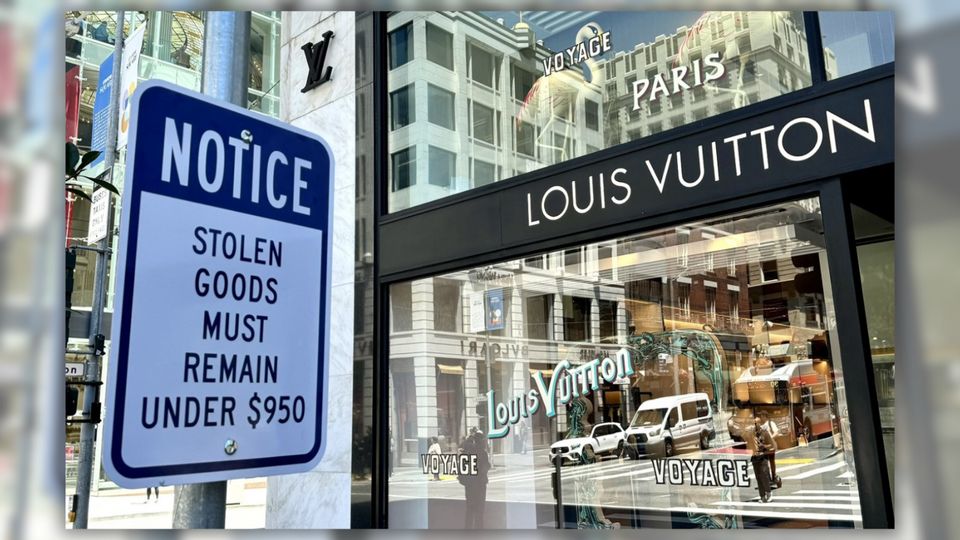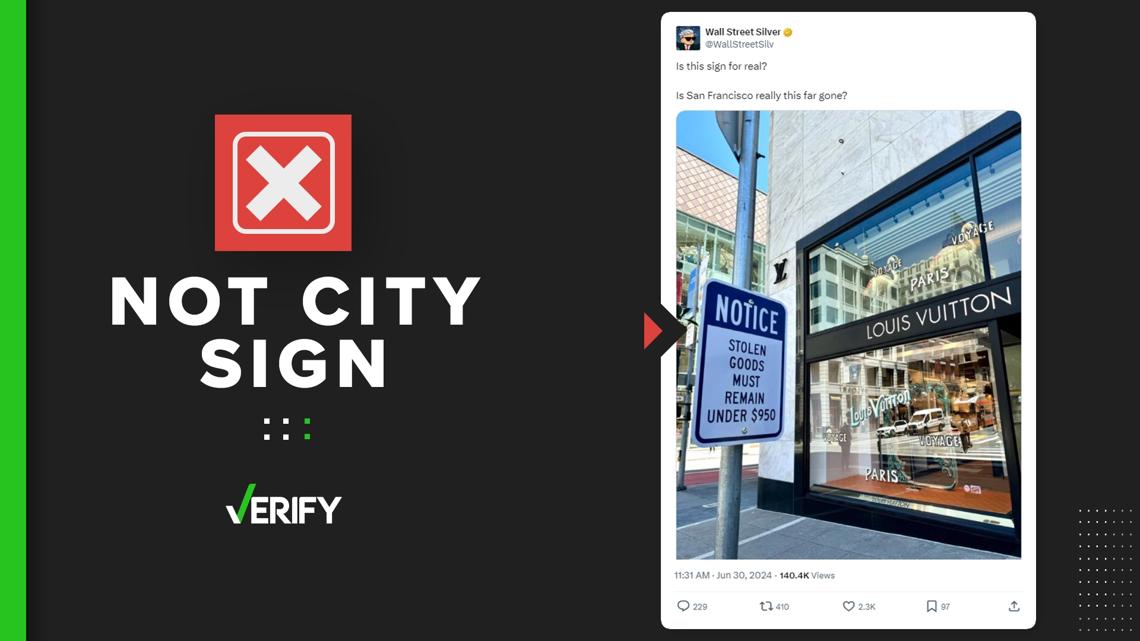How To Identify And Avoid Stolen Goods In San Francisco
San Francisco is renowned for its cultural vibrancy and lively streets, yet it grapples with the challenge of stolen goods circulating in its markets. Learning to recognize the signs of stolen goods is essential to safeguard yourself and others from inadvertently buying illegal items. This comprehensive guide will assist you in identifying key indicators and outline the necessary steps to take when dealing with stolen goods in San Francisco.
In a city as dynamic as San Francisco, staying alert is crucial. The rise in theft and the resale of stolen goods makes it imperative for both residents and visitors to understand how to identify suspicious items. By educating yourself, you can prevent contributing to the problem and help tackle this growing issue.
This guide focuses on delivering practical insights, including real-life examples and expert advice, empowering you with the knowledge to effectively detect stolen goods. Whether you're shopping at flea markets, online platforms, or local stores, this resource will equip you with the tools to stay informed and secure.
- Exploring Emily Compagnos Life Career And Personal Journey
- Discover The Inspiring Journey Of Korina Longin A Rising Star In The Modeling World
Exploring the Extent of Stolen Goods in San Francisco
San Francisco has long been a hub for various industries, but unfortunately, it also attracts criminal activities, including the sale of stolen goods. According to a report by the San Francisco Police Department, theft-related crimes have surged by 15% in the past year alone. This alarming statistic underscores the importance of comprehending the scale of the issue.
Stolen goods encompass a wide range, from electronics and luxury items to everyday products like clothing and accessories. The black market in San Francisco flourishes due to the demand for discounted items, often leading unsuspecting buyers into purchasing stolen merchandise.
Prevalent Types of Stolen Goods in San Francisco
- Electronics: iPhones, laptops, and other high-value gadgets are frequently targeted.
- Luxury Items: Designer handbags, watches, and jewelry are highly sought after by thieves.
- Apparel: Branded clothing and accessories are often stolen from local retailers.
- Household Goods: Appliances and furniture can also be part of the stolen goods market.
Spotting Stolen Goods: Key Indicators
Identifying the signs of stolen goods is the first step in protecting yourself. Below are some common indicators that an item may have been stolen:
- Exploring Talissa Smalleys Journey On Onlyfans A Comprehensive Guide
- Joana Pak A Global Icon In Arts And Entertainment
Unbelievably Low Prices
If an item is being sold at a price that seems too good to be true, it likely is. Stolen goods are often sold at significantly reduced rates to entice buyers. Always compare prices across multiple sources before committing to a purchase.
Absence of Receipts or Documentation
Legitimate sellers should always provide receipts and documentation for their products. If a seller is unable or unwilling to provide these, it could be a warning sign. Always request proof of purchase to ensure the item is not stolen.
Unusual Selling Platforms
While online marketplaces like Craigslist and Facebook Marketplace are popular, they can also be hotspots for stolen goods. Be cautious of sellers who refuse to meet in person or provide vague details about the item.
What to Do When You Suspect Stolen Goods
If you suspect that an item may be stolen, there are several steps you can take to verify its legitimacy:
Verify Serial Numbers
Many electronic devices and appliances come with serial numbers that can be used to confirm ownership. Use the manufacturer's website or contact customer service to check if the item has been reported as stolen.
Inspect for Signs of Tampering
Look for signs of tampering, such as missing labels, damaged packaging, or altered serial numbers. These can indicate that the item has been stolen and resold.
Report Suspicious Behavior
If you encounter a seller you believe is dealing in stolen goods, report them to the authorities. The San Francisco Police Department provides a hotline for reporting suspicious activity, ensuring that your community remains safe.
The Broader Economic Impact of Stolen Goods in San Francisco
The circulation of stolen goods not only affects individuals but also has far-reaching consequences for San Francisco's economy. Local businesses suffer from lost sales, while the city incurs additional costs in addressing theft-related crimes. According to a study by the University of California, Berkeley, theft-related crimes cost San Francisco approximately $50 million annually.
Efforts to combat stolen goods are ongoing, with local law enforcement and community organizations working together to raise awareness and implement stricter regulations. By supporting these initiatives, residents can help reduce the prevalence of stolen goods in their city.
Legal Implications of Purchasing Stolen Goods
Purchasing stolen goods, even unintentionally, can lead to legal consequences. Under California law, knowingly buying stolen property is considered a misdemeanor, punishable by fines and imprisonment. However, ignorance is not a valid defense, so it's essential to exercise due diligence when making purchases.
If you inadvertently purchase stolen goods, report the incident to the authorities immediately. Providing details about the transaction can assist law enforcement in tracking down the original thief and recovering the item.
Preventing Stolen Goods: Practical Advice for Buyers
Prevention is key to avoiding stolen goods. Below are some tips to help you stay safe:
- Only purchase items from reputable sellers and authorized retailers.
- Verify the authenticity of the item by checking serial numbers and documentation.
- Be cautious of deals that seem too good to be true.
- Inspect the item thoroughly before making a purchase.
- Report any suspicious activity to the authorities.
Community Initiatives to Tackle Stolen Goods
San Francisco's community plays a pivotal role in addressing the issue of stolen goods. Local organizations and law enforcement agencies collaborate to educate residents about the dangers of purchasing stolen items and the importance of reporting suspicious activity.
Programs such as neighborhood watch initiatives and community outreach events foster a sense of responsibility and vigilance among residents. By working together, San Francisco can create a safer environment for everyone.
Technology's Role in Identifying Stolen Goods
Advancements in technology have made it easier to detect and track stolen goods. Mobile apps and online databases allow users to verify the authenticity of items quickly and efficiently. For instance, the National Insurance Crime Bureau offers a free service that enables users to check if an item has been reported as stolen.
Law enforcement agencies in San Francisco also leverage technology to combat theft-related crimes. Surveillance cameras, GPS tracking, and data analytics are examples of how technology is being used to prevent and solve cases of stolen goods.
Case Studies: Real-Life Scenarios of Stolen Goods in San Francisco
Examining real-life examples can provide valuable insights into the world of stolen goods. Below are two case studies that highlight the importance of vigilance:
Case Study 1: The Altered iPhone
In 2021, a San Francisco resident purchased an iPhone from an online marketplace at a significantly reduced price. Upon closer inspection, the buyer noticed that the serial number had been altered. After reporting the incident to the authorities, it was discovered that the phone had been stolen from a local store.
Case Study 2: The Counterfeit Designer Handbag
A tourist in San Francisco purchased a designer handbag from a street vendor at a fraction of its retail price. Upon returning home, the buyer realized that the bag was counterfeit and had been produced using stolen materials. This case emphasizes the importance of verifying the authenticity of luxury items before making a purchase.
Conclusion: Stay Informed and Act
Recognizing the signs of stolen goods is critical to protecting yourself and your community. By understanding the indicators and taking proactive measures, you can help combat the issue of stolen goods in San Francisco. Always verify the authenticity of items, report suspicious activity, and support community efforts to create a safer environment.
We encourage you to share this article with friends and family to raise awareness about the dangers of purchasing stolen goods. Your vigilance can significantly reduce theft-related crimes in San Francisco. For more information on staying safe, explore our other articles on crime prevention and community safety.
Table of Contents
- Exploring the Extent of Stolen Goods in San Francisco
- Spotting Stolen Goods: Key Indicators
- What to Do When You Suspect Stolen Goods
- The Broader Economic Impact of Stolen Goods in San Francisco
- Legal Implications of Purchasing Stolen Goods
- Preventing Stolen Goods: Practical Advice for Buyers
- Community Initiatives to Tackle Stolen Goods
- Technology's Role in Identifying Stolen Goods
- Case Studies: Real-Life Scenarios of Stolen Goods in San Francisco
- Conclusion: Stay Informed and Act



Detail Author:
- Name : Vladimir Larson
- Username : johnson.tommie
- Email : shania97@torphy.com
- Birthdate : 1997-06-01
- Address : 7363 Floyd Cape Suite 546 Gibsonport, MD 29030-3563
- Phone : (601) 571-9390
- Company : Goodwin, Cronin and Larkin
- Job : Tool and Die Maker
- Bio : Vel praesentium et sint voluptatem nihil quis quis. Facere in corporis optio in doloremque aut iure necessitatibus. Cum accusantium minus vitae. Fugiat maiores aut et possimus rerum.
Socials
twitter:
- url : https://twitter.com/andy_id
- username : andy_id
- bio : Porro quasi assumenda ea consequatur consequuntur. Sequi qui eius animi aut ut cumque inventore.
- followers : 1558
- following : 692
linkedin:
- url : https://linkedin.com/in/andy.marquardt
- username : andy.marquardt
- bio : Et alias quia et magni architecto.
- followers : 5438
- following : 475
tiktok:
- url : https://tiktok.com/@andy5990
- username : andy5990
- bio : Quia voluptatibus incidunt pariatur sit neque.
- followers : 2784
- following : 333